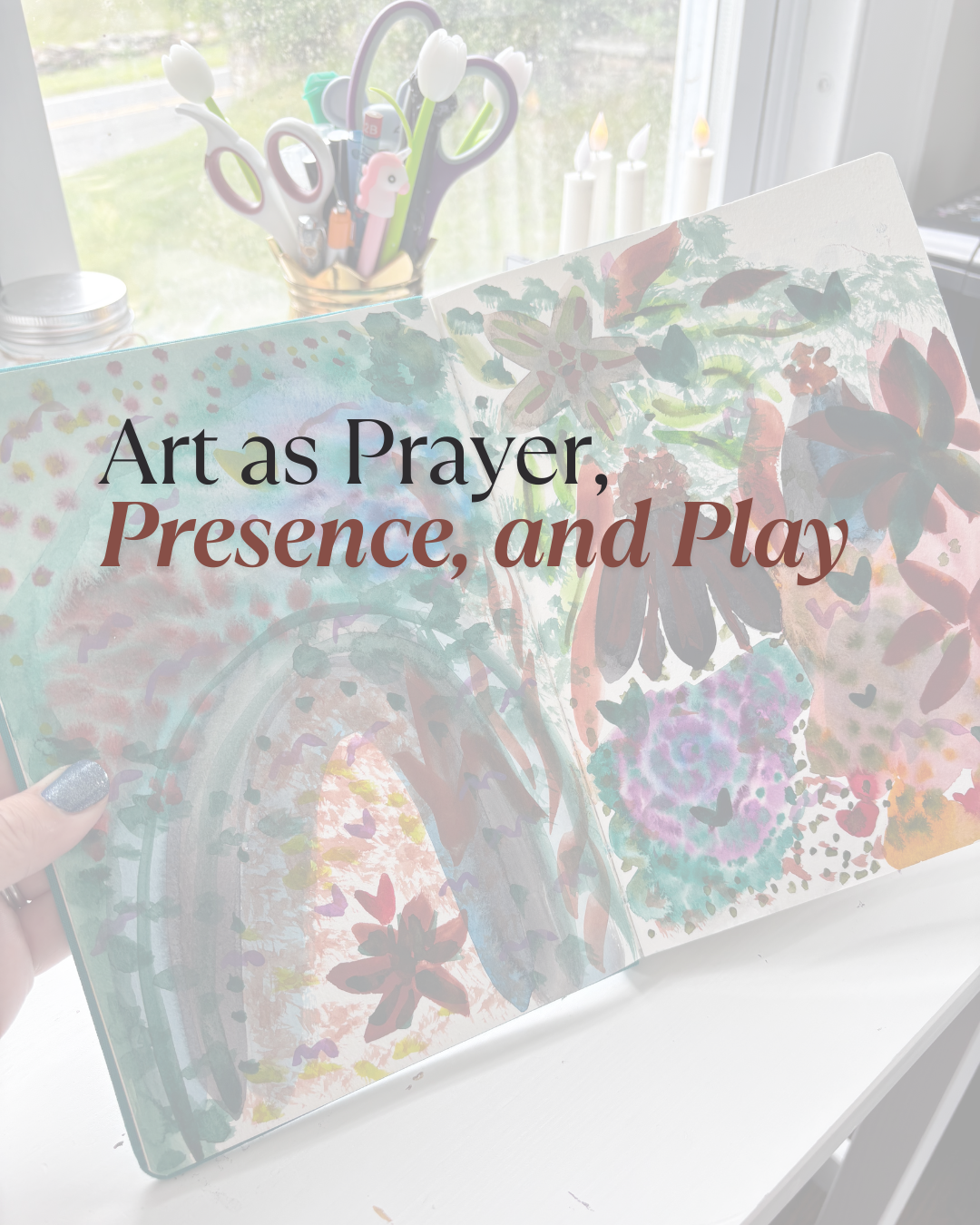Art as Prayer, Presence, and Play
Making art, even "ugly" art, for its own sake can be a profound act of intimacy with God. It invites us into the posture of being rather than doing, receiving rather than producing. In a world that prizes usefulness and polish, creating freely without concern for outcome mirrors the childlike trust that Jesus praises, the kind of trust that simply delights in the presence of the Father.
Not because the art is impressive or useful, but because the act of creating draws us into presence. It slows us down and invites us to notice what we feel, what stirs inside us, and what we otherwise might be tempted to rush past. In the quiet of making, we make space. And that is the space we can find God already waiting.
Creative prompts, like the ones I love to share, aren't about performance. They're a way of practicing presence. A way of saying, “Here I am, Lord, in all my imperfections.”
When we make art without judgment, we say: “I am allowed to take up space. I am allowed to play. I am allowed to express what’s inside, messy or not.” That kind of honest expression is a type of prayer, not a polished liturgy or even an extemporaneous prayer full of big words, but a groan, a laugh, a whisper. And that prayer invites God in to the very real life we are already living.
In Scripture, we see God as Creator, not just of majestic mountains and galaxies, but also of dust and mud. And God has invited us into that work and when we do so without self-protection or pretense, we open ourselves to encounter with Him. The art may be “ugly,” but the moment is beautiful.
And maybe, when we let go of trying to make something “good,” we become free enough to simply be with God, like a child bringing a crayon drawing to a parent, not for approval, but for connection.
This is what contemplative play is all about. Noticing. Being present. Making space. Trusting that God meets us in the making.

